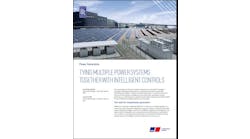Natura, Abilene Christian Closer to NRC Approvals to Build 1-MW Demonstration Reactor at Campus Lab
What could be a huge move forward for a type of advanced nuclear reactor technology, and possibly nuclear-powered microgrids of the future, is closer to starting its journey at a small private university in a historic Texas cattle drive hub community.
The U.S. Nuclear Regulatory Commission (NRC) informed Natura Resources that it expects to complete a safety assessment and issue a construction permit early this fall for the company’s first deployed project. Natura Resources plans to locate the advanced and unique molten salt reactor at Abilene Christian University (ACU).
The campus is home to the newly opened Nuclear Energy eXperimental Testing (NEXT) Laboratory. Once completed and if commissioned, the Natura reactor project would be operated at low power for research purposes.
The NRC could issue the permit by Sept. 30, according to reports. The commission oversees non-power research reactors as well as all of the 90-plus commercial reactors in operation across the U.S.
“The environmental assessment and upcoming completion of the safety evaluation for a construction permit are significant steps forward in the first deployment of the Natura MSR-1 system,” Doug Robison, company founder and president, said in a statement. “This deployment at ACU will not only demonstrate successful licensure of a liquid-fueled molten salt reactor but will provide critical operational data that will help us meet the world’s growing energy needs.”
Small modular reactor (SMR) and advanced next-gen nuclear energy is viewed by many as a solution for the twin challenges of decarbonization and exponential load growth from data center expansion and electrification of the transportation and building sectors. Many tech firms such as Microsoft are exploring the potential of SMR nuclear microgrids to someday power data centers.
Nuclear fission does not emit greenhouse gasses when generating power for electricity. Gaining permitting, financing and public support for nuclear projects, however, is a key challenge going forward.
Private and relatively small Abilene Christian University has claimed molten salt reactor research as one of its key energy specialties. ACU professor and NEXT Lab Director Rusty Towell and the campus team have been working on flowing salt research for close to seven years.
Graphite-moderated, fluoride salt flowing fluid may be a safer option in nuclear energy compared to a water-cooled reactor, proponents say. If a system fails, theoretically the salt solidifies around the reactive uranium and preventing overheating, according to reports.
ACU’s research is working to advance technical readiness levels of critical equipment needed in molten salt reactor operation, including flow meters, flanges, seals, level sensors, salt monitors, instrumentation and other hardware, Towell said.
Natura Resources was started only five years ago. With NRC permitting, the company will use the ACU research to continue developing its small modular MSR system to be fabricated on an assembly line and shipped to future customer sites via truck or rail.
Nuclear energy is carbon-free, but conventional, utility-scale projects are proving to be difficult to permit and supremely expensive to build. Georgia Power’s expansion to add two new Vogtle nuclear reactor units (3 and 4) took close to a decade and upward of $32 billion.
SMR nuclear reactors might be built at a fraction of that cost and with a much smaller footprint from 10 MW all the way to 300 MW, still far below Vogtle 3 and 4’s 1-GW capacity for each Westinghouse AP1000 reactor. The Abilene Christian research reactor will be only 1 MW and not connected to power any load, according to reports.
Abilene Christian University’s total enrollment is about 5,000 undergraduate and graduate students, according to U.S. News and World Report. Once revered as a critical hub of a historic cattle drive trail, the city of Abilene is now home to 125,000 residents, home to three universities, an Air Force base and several major facilities in the health care and insurance sectors.
Other small modular and advanced reactor startups trying to progress to an operational project include TerraPower, NuScale, X-energy and Oklo. The U.S. Department of Energy recently announced funding of up to $900 million for applications working on SMR projects.
Current U.S. nuclear energy power plants account for close to 18% of the utility-scale electricity mix and about half of the nation's carbon-free generation, according to federal statistics from the Energy Information Administration.








